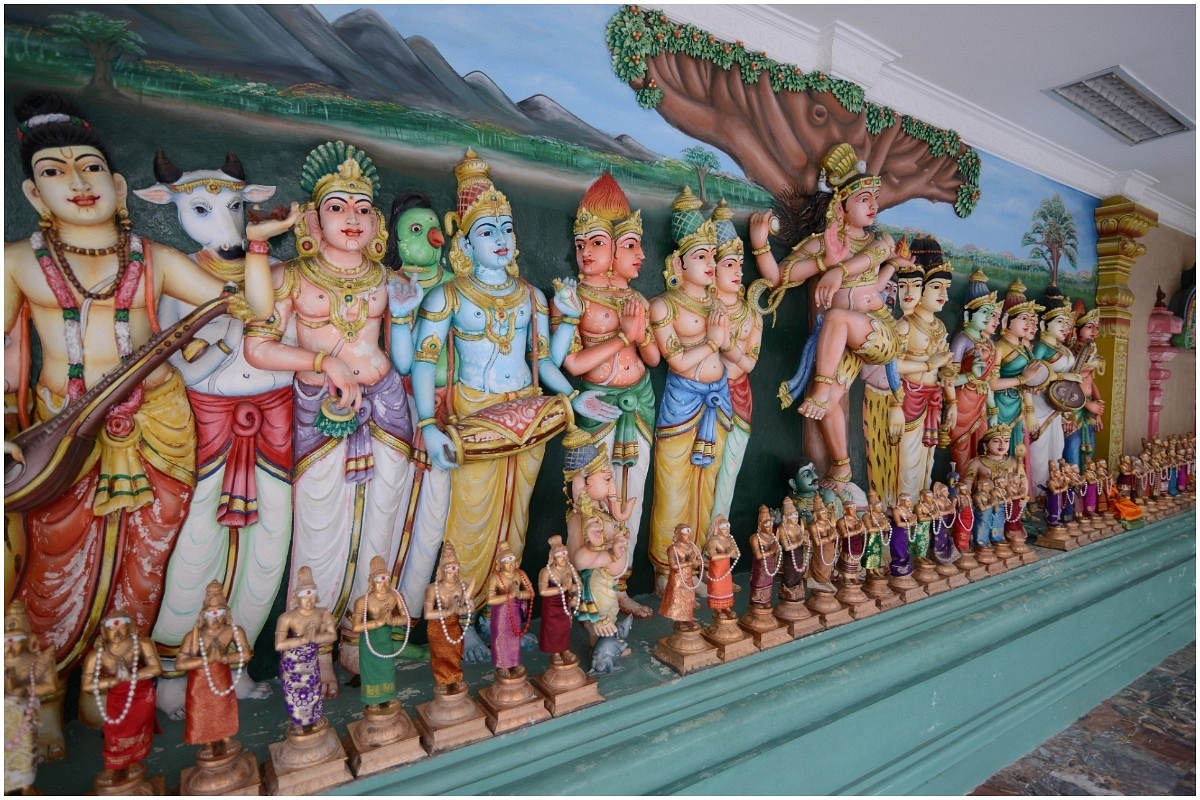Culture
Why Nobody Wants To Defend Brahmin Priests In Tamil Nadu
- Priesthood at temples in Tamil Nadu is already not a Brahmin preserve. There are priests from various castes officiating at a wide variety of temples.
- But the trouble for the Brahmins now is that this and other details are not known to, or understood, by the average devotee.

(Wikimedia Commons)
It has now been a few days since the Tamil Nadu government appointed a handful of personnel as priests in a few temples across the state. The government insisted that while making such appointments they are not dismissing traditional Brahmin priests and that they are only appointing non-Brahmins where there are vacancies.
The government's case is that it is in the interest of social justice that a person from any caste could become a priest at any temple. What they are implying (but not saying) is that Brahmins can't treat priesthood as their own preserve and that there can be some kind of meritocracy where 'properly' trained personnel can take over priesthood.
Traditionalists, whose numbers are quite less, have naturally reacted with much outrage. They've tried to point out the following.
Priesthood at temples is already not a Brahmin preserve. There are priests from various castes officiating at a wide variety of temples. Some of the most famous Murugan shrines across Tamil Nadu have non-Brahmin priests from particular castes — nobody has tried to appoint an 'outsider' as priests here.
The reason there are hereditary priests or priests from certain clans at some (or all?) temples is because it is how the temples were founded or it is how their liturgical architecture has been designed — in other words, this has been the tradition. There's no scientific reason or logical argument. It is just what it is.
There is more. It is not as if the Brahmin community is monolithic. There are groups within sub-castes, and sub-groups within groups. Each has its own temples, vocations (not everybody can or does become a priest) and hereditary rights. There is much philosophical and ritual difference between all of these sects. Once again, each group and sub-group lives its own tradition.
Some of the Sri Vaishnava temples have seen centuries old families exercise influence and even monopoly over certain aspects of temple management. A Brahmin from another group is not going to be allowed to participate or officiate just because he has a thread hanging on his shoulder. The same can be said about the sects and groups.
The trouble for the Brahmins now is that none of this is either known to or understood by the average devotee. It might take a couple of days of explaining to help the most pious devotees understand that there is a diversity of cultural practices from Shakta, Shaiva, Ganapatya, Vaishnava and Kaumara traditions in this country, and that each of these broad divisions have developed a multitude of traditions and practices that are distinct from each other.
Now imagine the difficulty in communicating the nuances and details of each sub-tradition and rulebook that governs hundreds of temples across the Tamil landscape. Quite the impossible thing.
All these years the changes that were brought about by the social justice movement have largely been on the periphery of tradition — to enter a temple and offer worship is not the same as taking the place of priest where there exist injunctions about who can be priests for hundreds of years.
So when the government strikes at the very root of priesthood it strikes at two very sensitive points: it is the sole remaining 'occupation' for many families and it has been the tradition of these families to serve their deities in the temples for generations after generations.
Once again, the average devotee does not understand all this. To them religion is about a few simple rituals conducted at home and the occasional temple visit. The average devotee does not particularly care too much about what specific text governs the temples. When he or she sees a Brahmin resisting an 'outsider' from being a priest the devotee is unable to comprehend what the fuss is all about.
The lay devotee does not know that the sub-group of priests whose job security and religious rights is now under threat is amongst the poorest among Brahmins. This group has largely given up the trappings of corporate jobs and instead have chosen to stay back in the hinterland in order to serve their gods. But who knows anything about them outside a small group of well-read individuals?
In the centuries gone by, the priestly clans have had royal patrons and sovereign support. It did not matter if the lay devotee knew enough or anything about the affairs of the temple and the priests. Today, they are forced to look for this support from the general populace that neither understands nor sympathises with their worldview.
The lessons are simple: build broad coalitions with the local communities who will appreciate traditions and threats.
Support Swarajya's 50 Ground Reports Project & Sponsor A Story
Every general election Swarajya does a 50 ground reports project.
Aimed only at serious readers and those who appreciate the nuances of political undercurrents, the project provides a sense of India's electoral landscape. As you know, these reports are produced after considerable investment of travel, time and effort on the ground.
This time too we've kicked off the project in style and have covered over 30 constituencies already. If you're someone who appreciates such work and have enjoyed our coverage please consider sponsoring a ground report for just Rs 2999 to Rs 19,999 - it goes a long way in helping us produce more quality reportage.
You can also back this project by becoming a subscriber for as little as Rs 999 - so do click on this links and choose a plan that suits you and back us.
Click below to contribute.
Latest